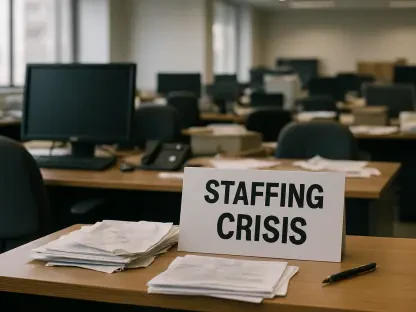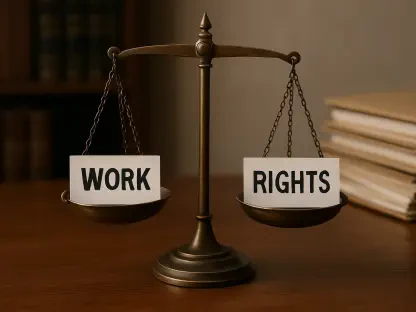In today’s interview, we have the pleasure of speaking with Sofia Khaira, a distinguished expert in diversity, equity, and inclusion, known for her groundbreaking work in promoting inclusive workplace practices. Sofia’s insights are invaluable as she dives deep into the complex dynamics of the U.S. Equal Employment Opportunity Commission (EEOC) and its role in safeguarding civil rights. In this conversation, we explore the nuances of the EEOC’s independence, its interactions with the executive branch, and its commitment to enforcing civil rights in light of recent developments.
Can you clarify your current stance on whether the EEOC is an independent agency or part of the executive branch?
The EEOC, despite some perceptions to the contrary, functions as an agency within the executive branch. This distinction is crucial because it implies that the EEOC can operate under directives from the president, provided they are lawful. This understanding shifts how we see the agency’s integration within the governmental structure and its potential interactions with the current administration.
What led you to change your opinion about the EEOC’s independence since your 2021 X post?
Admittedly, my perspective evolved as I became more informed about the historical context and legal interpretations that define the EEOC’s status. My earlier view didn’t account for the longstanding position held by the agency’s office of legal counsel and the Justice Department, which have consistently viewed the EEOC as part of the executive branch. Understanding this continuity helped reshape my opinion.
How do the viewpoints of former Democratic commissioners support your belief that the EEOC is not independent?
The acknowledgment by former commissioners, particularly those who served under different administrations, reinforces the notion that perceptions of independence may not align with reality. Their understanding, backed by their tenure experiences, highlights a cross-partisan consensus on the EEOC’s functional reality as an executive branch agency.
How have the EEOC’s office of legal counsel and the Justice Department historically viewed the agency’s status?
Since the 1970s, these bodies have maintained a consistent view that aligns the EEOC within the executive branch. This perspective has significant implications, especially concerning the constitutionality of the EEOC’s enforcement actions under laws like the Age Discrimination in Employment Act, reinforcing the agency’s need to operate under the executive framework.
Could you explain the implications of EEOC being part of the executive branch in terms of its relationship with the White House?
Being under the executive branch implies that the EEOC could potentially be swayed by presidential directives, which shapes its investigative priorities and case decisions. This relationship underlines an inherent balance of adhering to statutory responsibilities while responding to the White House, making its operational autonomy a topic of ongoing debate.
Are there any specific examples of cases where the White House has influenced EEOC’s decisions?
While specific cases where direct influence occurred may not be publicly documented, there are historical instances where the agency adjusted its stance or withdrawal from certain cases, often aligning with the prevailing administration’s policy shifts. This fluid dynamic emphasizes the executive’s potential influence over the agency’s actions.
Can you describe what constitutes a “lawful directive” from the president that the EEOC would be required to follow?
A lawful directive must comply with existing legal frameworks and respect federal laws guiding the agency’s operations. It’s a nuanced interaction where the directive must legally withstand scrutiny while not overstepping constitutional limits or infringing upon rights protected by statutes the EEOC enforces.
How did the EEOC’s stance on transgender bias cases change under your leadership?
Under the current leadership, the EEOC has revisited its positions, particularly regarding cases involving gender identity discrimination, to align with changes in executive orders. This has sometimes meant stepping back from previously filed lawsuits but continues to welcome new charges, reflecting both adaptive strategies and ongoing commitments to civil rights.
What were the reasons behind the decision to dismiss the Lush Handmade Cosmetics case?
Dismissing the Lush case involved unanimous consultation with career staff, who recognized the challenges posed by conflicting executive orders at that time. The complex legal landscape made it difficult to pursue the case without contravening federal directives, highlighting the friction between policy and enforcement.
How do you reconcile the dismissal of transgender bias cases with the U.S. Supreme Court’s decision in Bostock v. Clayton County, Ga?
The Bostock decision affirms protection against discrimination for transgender employees, setting a legal benchmark the EEOC acknowledges. When assessing dismissals, it’s about navigating between compliance with both executive orders and Supreme Court precedents, aiming to uphold civil rights while maneuvering legal constraints.
Can you provide insight into the EEOC’s investigative processes and how they handle charges from transgender and nonbinary employees?
The EEOC aims to handle every charge with impartiality and confidentiality, though procedural specifics often remain privileged. The agency is committed to treating all allegations seriously, ensuring investigations align with Title VII protections, reflecting intent to uphold equal treatment irrespective of gender identity.
How does the Supreme Court’s decision in Ames v. Ohio Department of Youth Services impact the EEOC’s approach to handling discrimination cases?
The Ames decision reaffirms the EEOC’s commitment to fair treatment for majority-group employees, potentially enhancing the agency’s existing frameworks. It underscores a principle that transcends group identity, fortifying the pursuit of equitable civil rights enforcement for all employees, in line with legal rulings.
What steps is the EEOC taking to ensure equal treatment for all employees, regardless of gender identity or majority-group status, following recent legal decisions?
The EEOC is actively working to integrate recent legal interpretations into its enforcement strategies. By aligning its actions with court directives, the agency fosters an environment where all employees, irrespective of background or identity, are assured protection under evolving civil rights laws.
Could you elaborate on the agency’s commitment to civil rights law and how it plans to enforce these principles moving forward?
Looking ahead, the agency remains resolute in its dedication to advancing civil rights. It seeks to balance executive influences with judicial mandates, ensuring enforcement actions are consistent, fair, and rooted in legal precedence, reinforcing its mission to safeguard equitable treatment.









